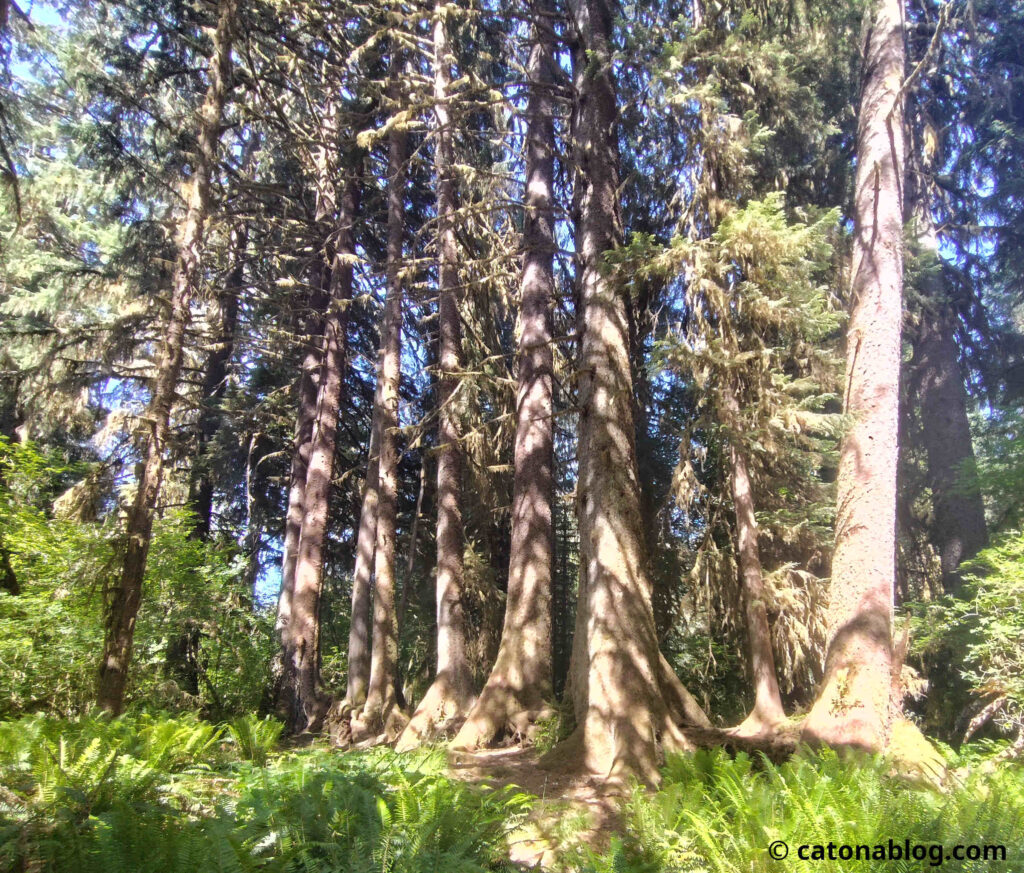
Jul 26th, 2025 Saturday Sunny
On our trip to the Olympic National Park, we paid our homage to Hoh’s rain forest, one of the most well-known attractions in the park.
Given its popularity and our unwillingness to share our first encounter with a temperate rain forest on this continent with too many other people, we planned our visit on a weekday, stayed the night before as close to the park as possible, and headed out early, arriving barely past eight o’clock. We were greeted by an almost empty parking lot, and the forest to ourselves!
Temperate rain forests are rare in the world, because they require very specific conditions to create. The temperatures need to be mild throughout the year, with no harsh winter or scorching summer. In addition, large amount of rainfall is needed to sustain the countless varieties of vegetation. Last but not least, the area has to be well-protected from human development, despite of the treasures hidden inside the forest (lumber of course, but also wild animals, fruits, fungi and minerals). As a result, lots of the existing ones are located in regions traditionally inhabited by aboriginal tribes, who tend to view such majestic natural wonders with awe instead of greed.
A morning stroll in the quietness was soothing, as the rays of sun scattered through leaves, and the chirping of birds stirred the moist air. In contrast to the numerous shades of green, red/orange/yellow orbs of salmonberries hung on bushes, some above creeks, and some within our reach. As a berry lover, I could not resist the temptation to try one. It was packed with tangy and astringent juice, only a hint of sweetness. I bet they would make delicious jam 😛
Gigantic sitka spruce trees are common in this zone, plenty of which have lived up to hundreds of years. Still, they may eventually fall down to the ground, due to either age or having been struck in a thunderstorm. While in the perspective of humankind, the fallen tree has “died”, nature has its own course.
As our path wound, we beheld a living proof of the circle of life.
In this captured photo, eight young spruces have grown out of what must have been a huge “mother” sitka. The seeds probably flew onto the bark, sprouted, sent out roots to take advantage of the nutrition stored in the old to support themselves. Little by little, the decaying trunk broke down to give way to a younger generation, until its shape is no longer visible. Nevertheless, we can deduce its trace from the straight line formed by the eight “babies”, and we can imagine its grandeur from its healthy “descendants”.
In a sense, did the old spruce really die? Or is it continuing to live, albeit in a different way?
Perhaps, we can say that it is reborn.
The process of rebirth could take decades, yet it began at the same moment of the “death”. Across the seasons, not only were the saplings benefiting, but thousands of birds came and went, families of insects built their homes, and mushrooms transformed the energy into new forms.
Through its own generosity, this amazing tree never ceases to be part of the woods. Through its contribution to the community, she extends her limited being into eternity.